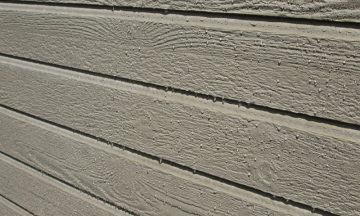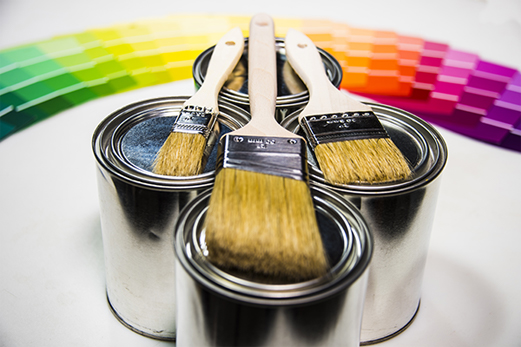Wax bleed is a condition that is most predominant newer homes built in the 2000’s through today. Normally found on exterior hard board siding, we have found the wax bleed issue in many composite man-made materials on the exterior of homes (excluding stucco and dryvit type materials).
What causes this?
Paraffin wax is included in exterior composite materials to enhance its water resistance, and minimize water absorption. The wax can migrate to the surface of the paint, and show as a splotchy dirt collection. This is seen most commonly on the ‘sunny’ side of the structure, where the siding expands and contracts the most with temperature changes, though can affect all areas of the home. The heat, expansion, and contraction of the siding causes the wax to melt and leach out. Darker colors are more apt to show the wax bleed due to their tendency to absorb heat, as well as the filmy discoloration is more pronounced and easier to see on the darker color.
How do I identify if it is wax?
- Try to clean a small effected area with a bleach solution.
- Mildew and mold can create similar kinds of discoloration. Mix 1-part bleach to 3- parts water, and apply the solution to the suspected area. Wipe away the mixture, rise, and let dry. If the discolored area does not change color when washed with the solution, it is most likely wax.
- The water droplet test
- Use a spray bottle full of water to heavily ‘sprits’ both a discolored area and to a non-discolored area. If the water beads up and runs off the discolored area while being absorbed into the non-discolored area, a wax condition is indicated on the discolored area. See the pictures below for examples of ‘beading’. Please note: some homes are entirely covered in wax damage and it may be difficult to find a ‘non discolored’ place to compare to.
- The age of the home
- The majority of homes we see built in the early 2000’s to current can suffer from some from wax damage. Rarely do we see any homes from the late 90’s or earlier with damage.
- Touching it
- In rare severe cases the wax can be felt on the siding as an oily or waxy substance.
How to treat it
The Painting Pro worked closely with our paint vendors to address this issue. The current solution is a specialized ‘hot’ primer over any of the affected areas. The ‘hot’ primer will burn through the wax and adhere to the paint underneath, providing a stable platform to successfully paint on top of.
Green Eco Friendly Painting
EPA Certificate #R-I-18499-10-04332
Not only do we offer traditional house painting services but we also offer a line of environmental friendly painting services. Our painters can paint your house or commercial property and be “green” at the same time. From our eco friendly paints to the thorough cleanup process your property will not only look great but also be safe within the environment.

